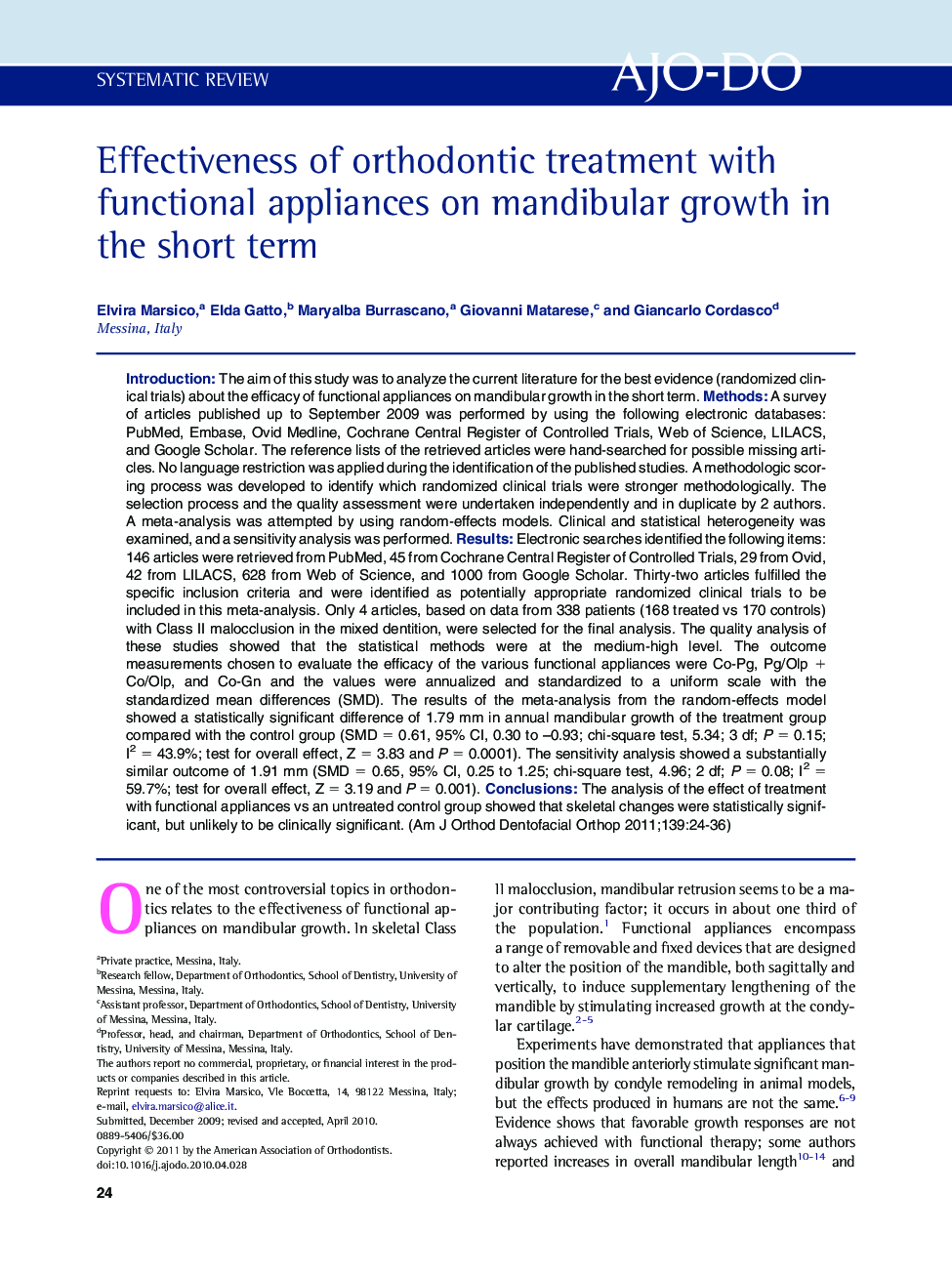| Article ID | Journal | Published Year | Pages | File Type |
|---|---|---|---|---|
| 3117331 | American Journal of Orthodontics and Dentofacial Orthopedics | 2011 | 13 Pages |
IntroductionThe aim of this study was to analyze the current literature for the best evidence (randomized clinical trials) about the efficacy of functional appliances on mandibular growth in the short term.MethodsA survey of articles published up to September 2009 was performed by using the following electronic databases: PubMed, Embase, Ovid Medline, Cochrane Central Register of Controlled Trials, Web of Science, LILACS, and Google Scholar. The reference lists of the retrieved articles were hand-searched for possible missing articles. No language restriction was applied during the identification of the published studies. A methodologic scoring process was developed to identify which randomized clinical trials were stronger methodologically. The selection process and the quality assessment were undertaken independently and in duplicate by 2 authors. A meta-analysis was attempted by using random-effects models. Clinical and statistical heterogeneity was examined, and a sensitivity analysis was performed.ResultsElectronic searches identified the following items: 146 articles were retrieved from PubMed, 45 from Cochrane Central Register of Controlled Trials, 29 from Ovid, 42 from LILACS, 628 from Web of Science, and 1000 from Google Scholar. Thirty-two articles fulfilled the specific inclusion criteria and were identified as potentially appropriate randomized clinical trials to be included in this meta-analysis. Only 4 articles, based on data from 338 patients (168 treated vs 170 controls) with Class II malocclusion in the mixed dentition, were selected for the final analysis. The quality analysis of these studies showed that the statistical methods were at the medium-high level. The outcome measurements chosen to evaluate the efficacy of the various functional appliances were Co-Pg, Pg/Olp + Co/Olp, and Co-Gn and the values were annualized and standardized to a uniform scale with the standardized mean differences (SMD). The results of the meta-analysis from the random-effects model showed a statistically significant difference of 1.79 mm in annual mandibular growth of the treatment group compared with the control group (SMD = 0.61, 95% CI, 0.30 to –0.93; chi-square test, 5.34; 3 df; P = 0.15; I2 = 43.9%; test for overall effect, Z = 3.83 and P = 0.0001). The sensitivity analysis showed a substantially similar outcome of 1.91 mm (SMD = 0.65, 95% CI, 0.25 to 1.25; chi-square test, 4.96; 2 df; P = 0.08; I2 = 59.7%; test for overall effect, Z = 3.19 and P = 0.001).ConclusionsThe analysis of the effect of treatment with functional appliances vs an untreated control group showed that skeletal changes were statistically significant, but unlikely to be clinically significant.
